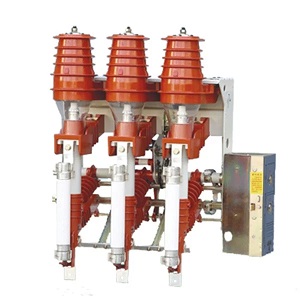Characteristics of an Isolator Disconnector Switch
2023-10-18
An Isolator Disconnector Switch, also known simply as an Isolator Switch or Disconnect Switch, is an electrical switch used to isolate or disconnect electrical equipment or circuits from the power source. Its primary function is to ensure the complete isolation of electrical equipment for maintenance, repair, or safety purposes.
Key features and characteristics of an Isolator Disconnector Switch include:
1. Manual Operation: Isolator switches are typically manually operated, meaning they require physical action by an operator to open or close the switch.
2. Double-Throw: Isolator switches often have a double-throw configuration, meaning they can disconnect or isolate the equipment from both the line (incoming power) and the load (outgoing power) sides.
3. Visible Indication: Many isolator switches have visible indication features, such as handle position indicators, to clearly show whether the switch is in the "ON" or "OFF" position.
4. Ratings: Isolator disconnectors come in various current ratings to match the specific requirements of the electrical equipment or circuit they are meant to isolate.
5. Safety Interlocks: Some isolator switches may include safety interlocks to prevent accidental operation, ensuring that the switch can only be operated when certain conditions are met.
6. Load-Breaking Capacity: Isolator switches are designed to safely break the load current and withstand the associated arc produced during switching without damage to the contacts.
Isolator disconnect switches are commonly used in various electrical systems and installations, including power distribution networks, industrial plants, substations, and electrical panels. They are often placed upstream of circuit breakers and other protective devices, allowing for safe disconnection of power before maintenance or repairs are performed.
It's important to note that an isolator switch is different from a circuit breaker. While both devices can interrupt electrical current, a circuit breaker is designed to protect the circuit from overload or short circuit conditions, and it automatically trips to disconnect the circuit. An isolator switch, on the other hand, is primarily used for manual disconnection of equipment and is not intended to provide overcurrent protection.
The selection, installation, and operation of an isolator disconnector switch must be done in compliance with electrical safety standards and local regulations to ensure proper isolation and protection during maintenance and repairs.



